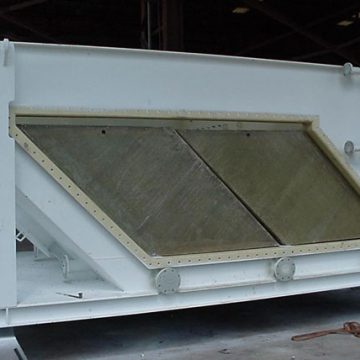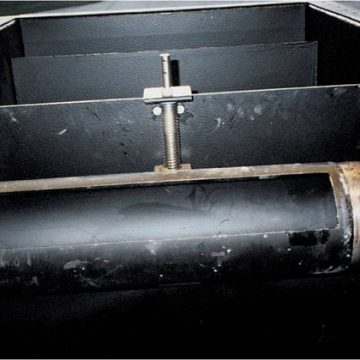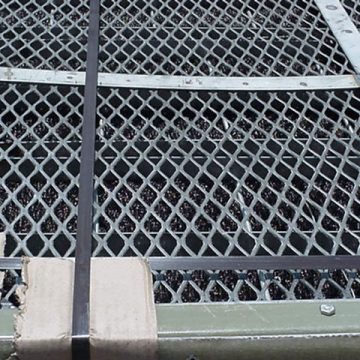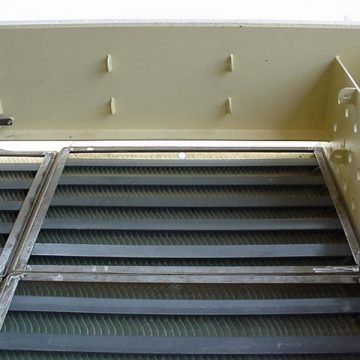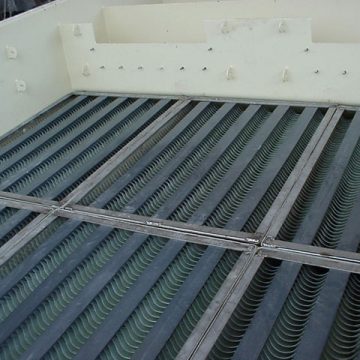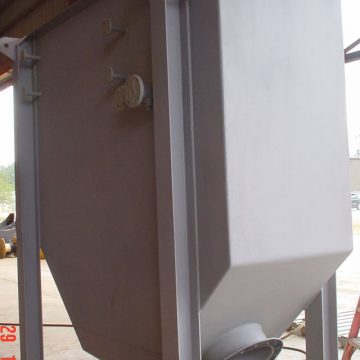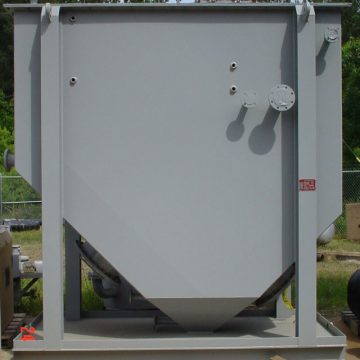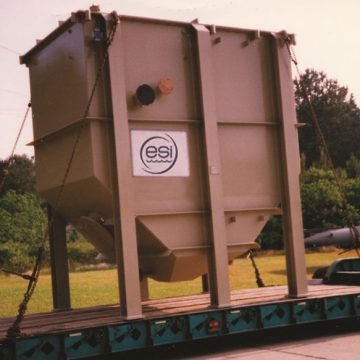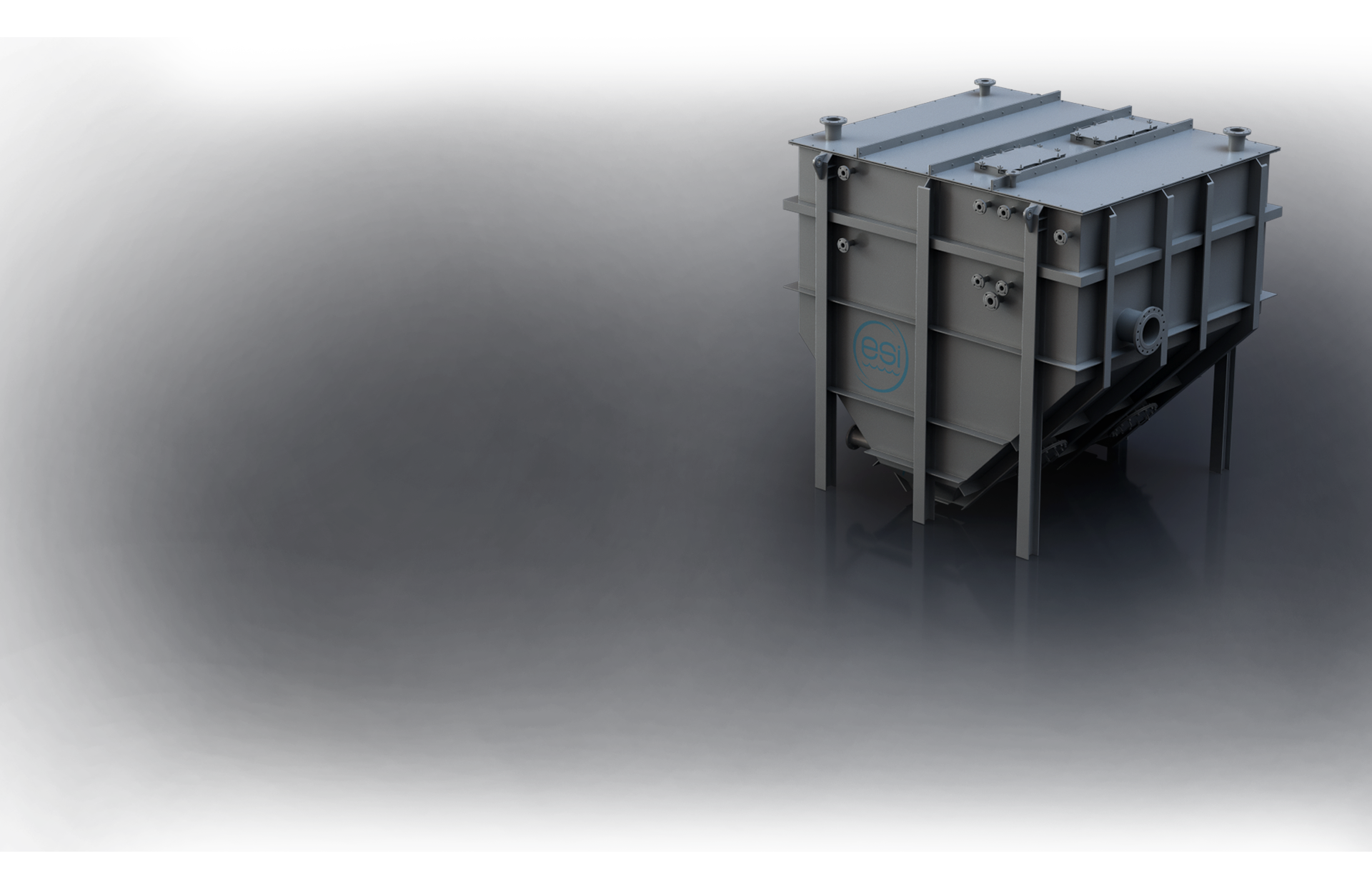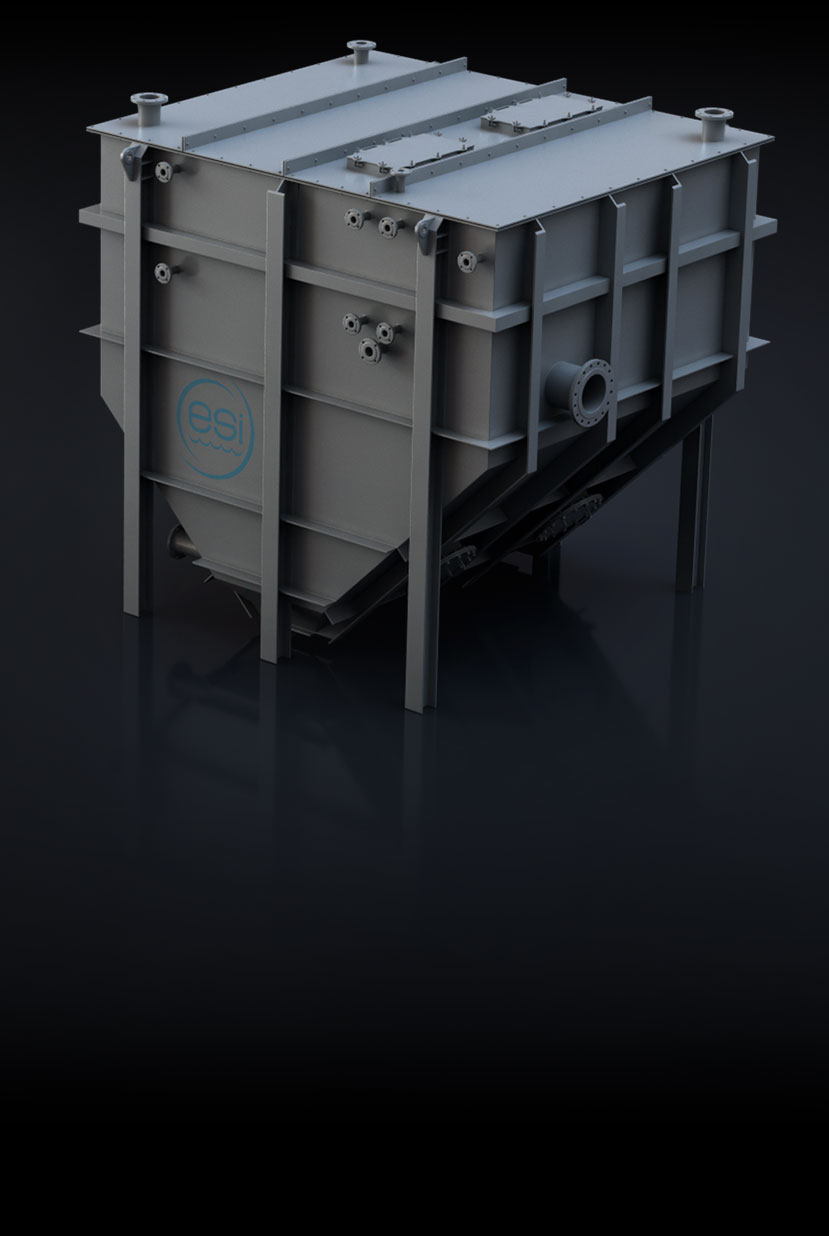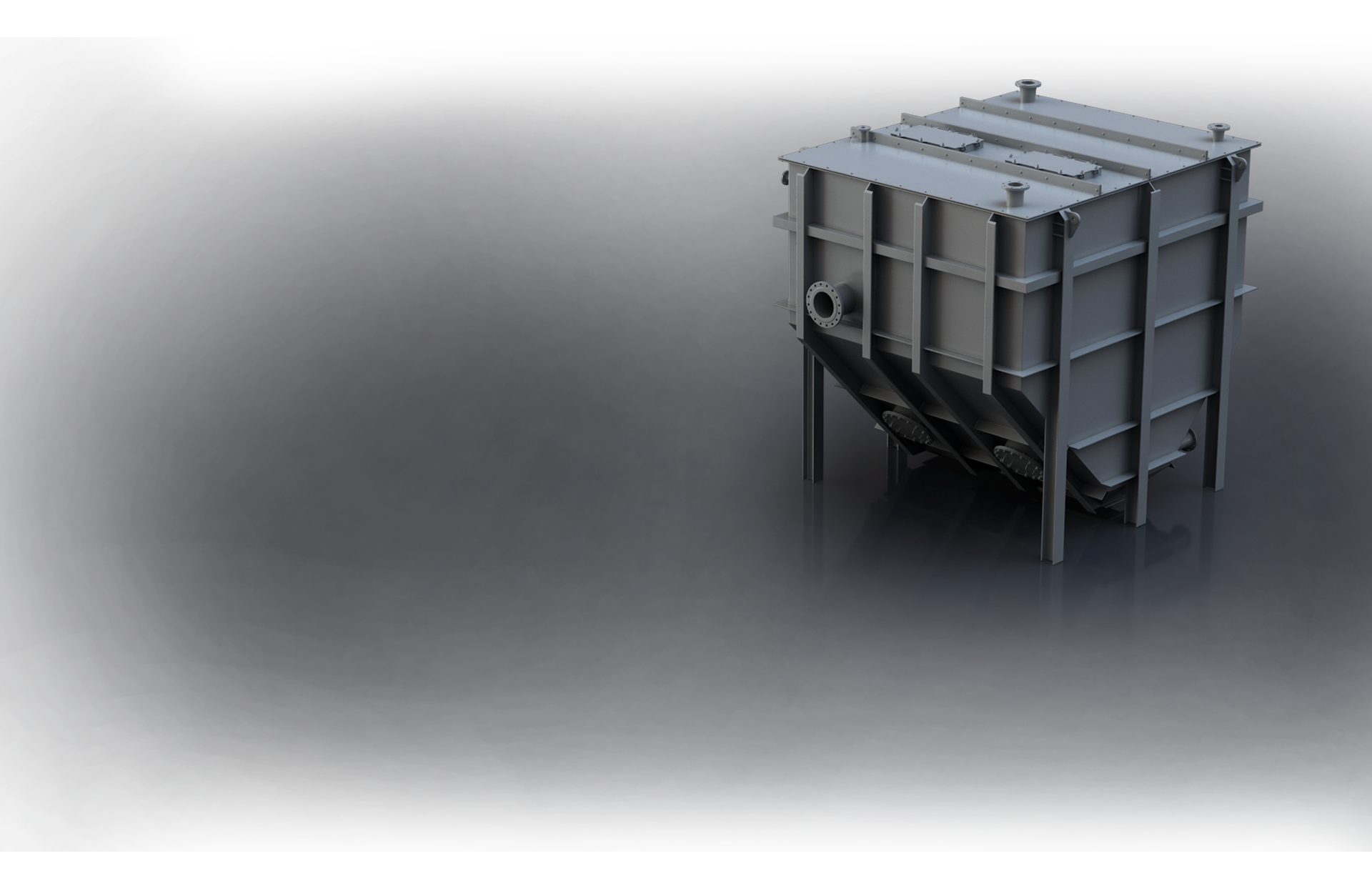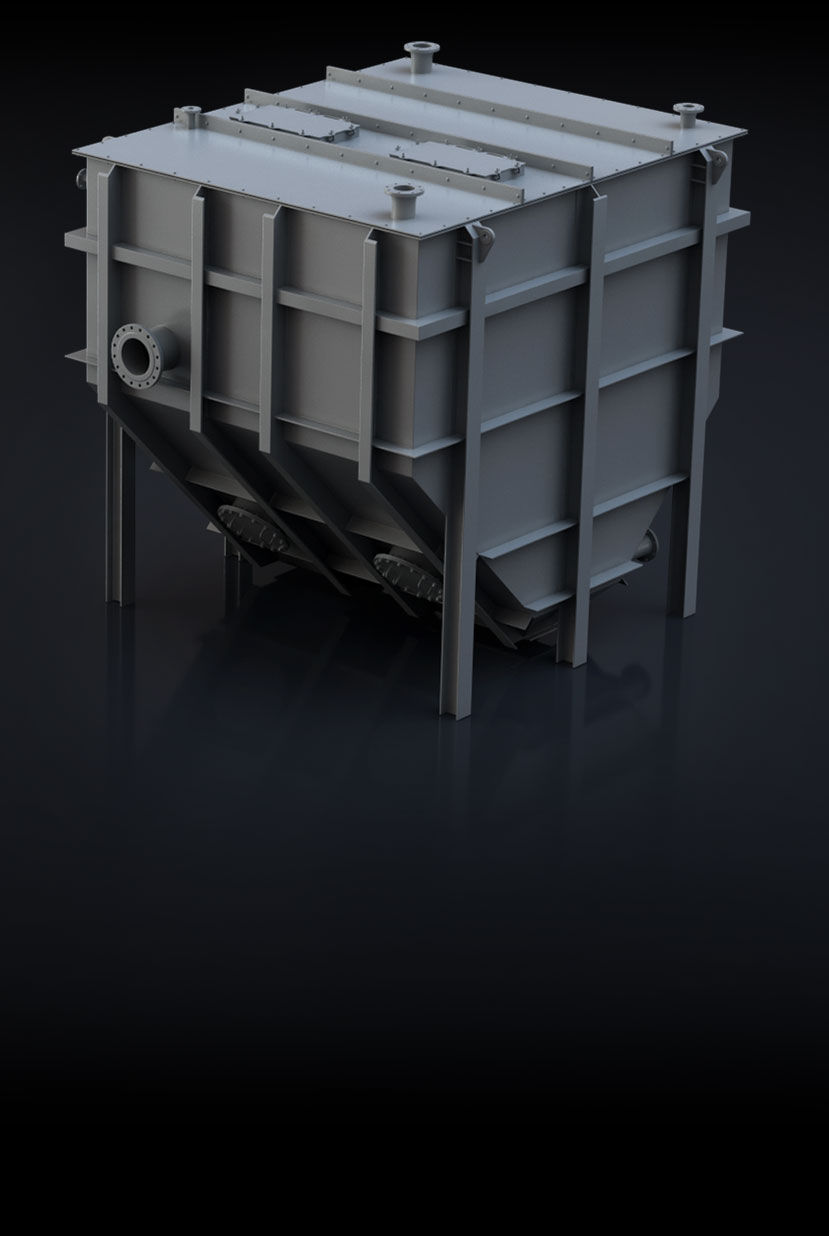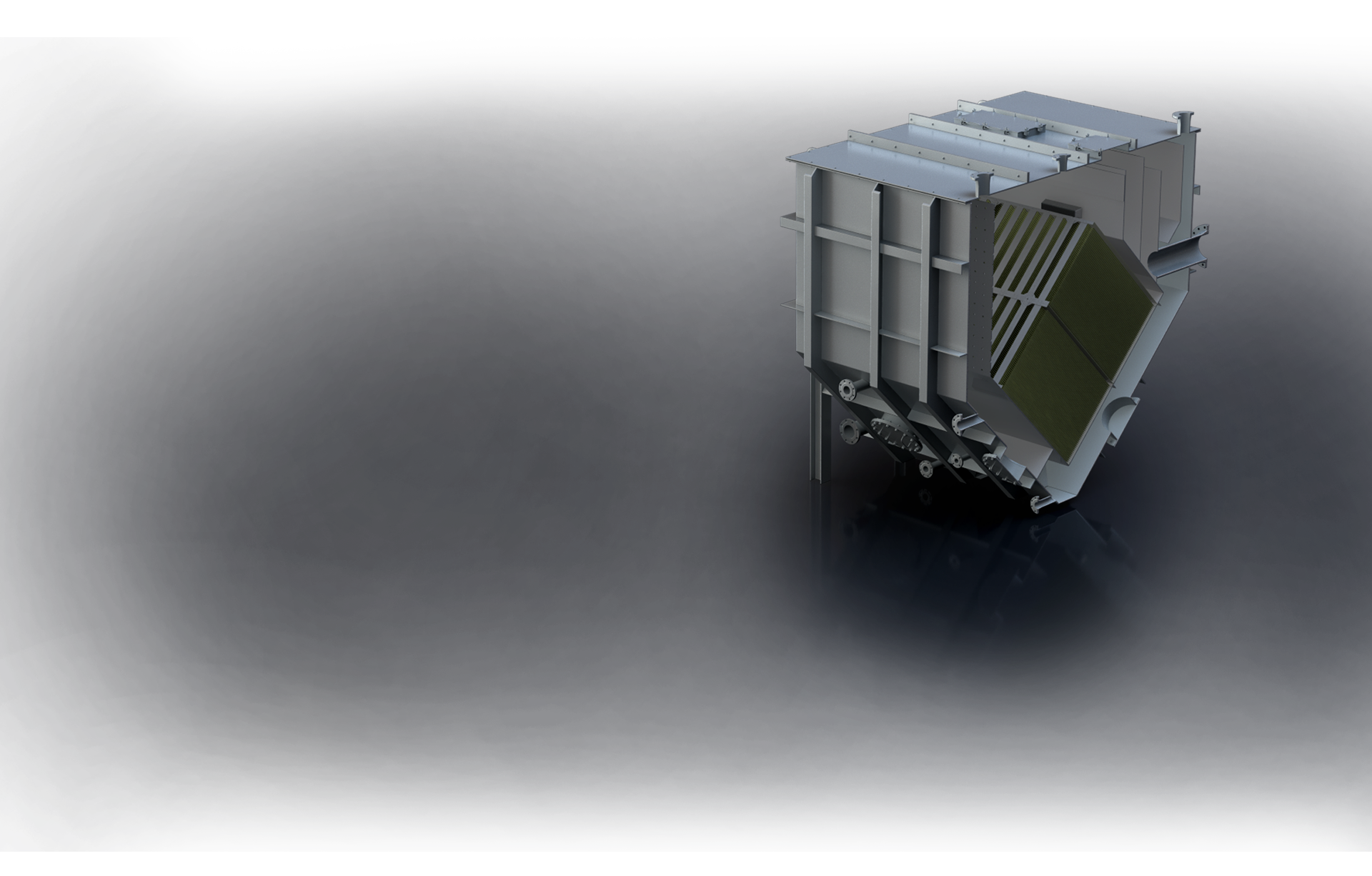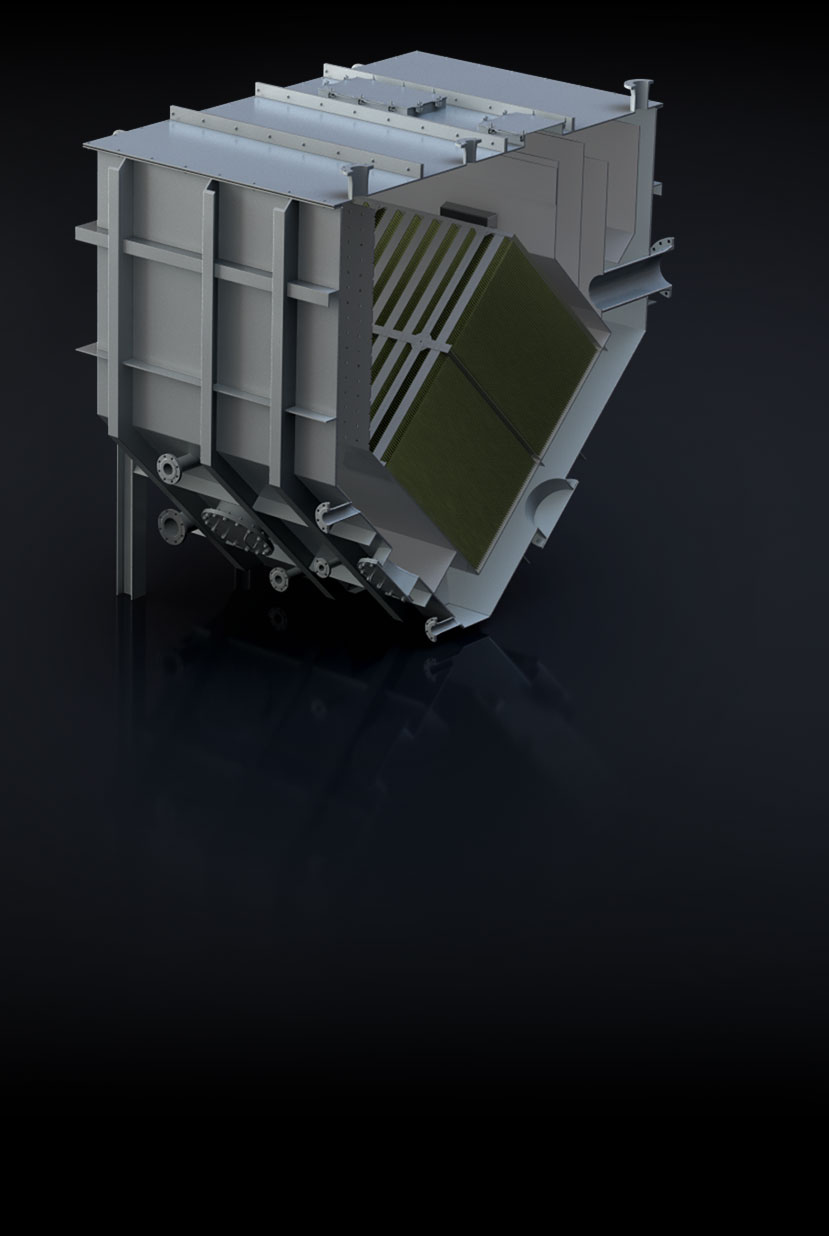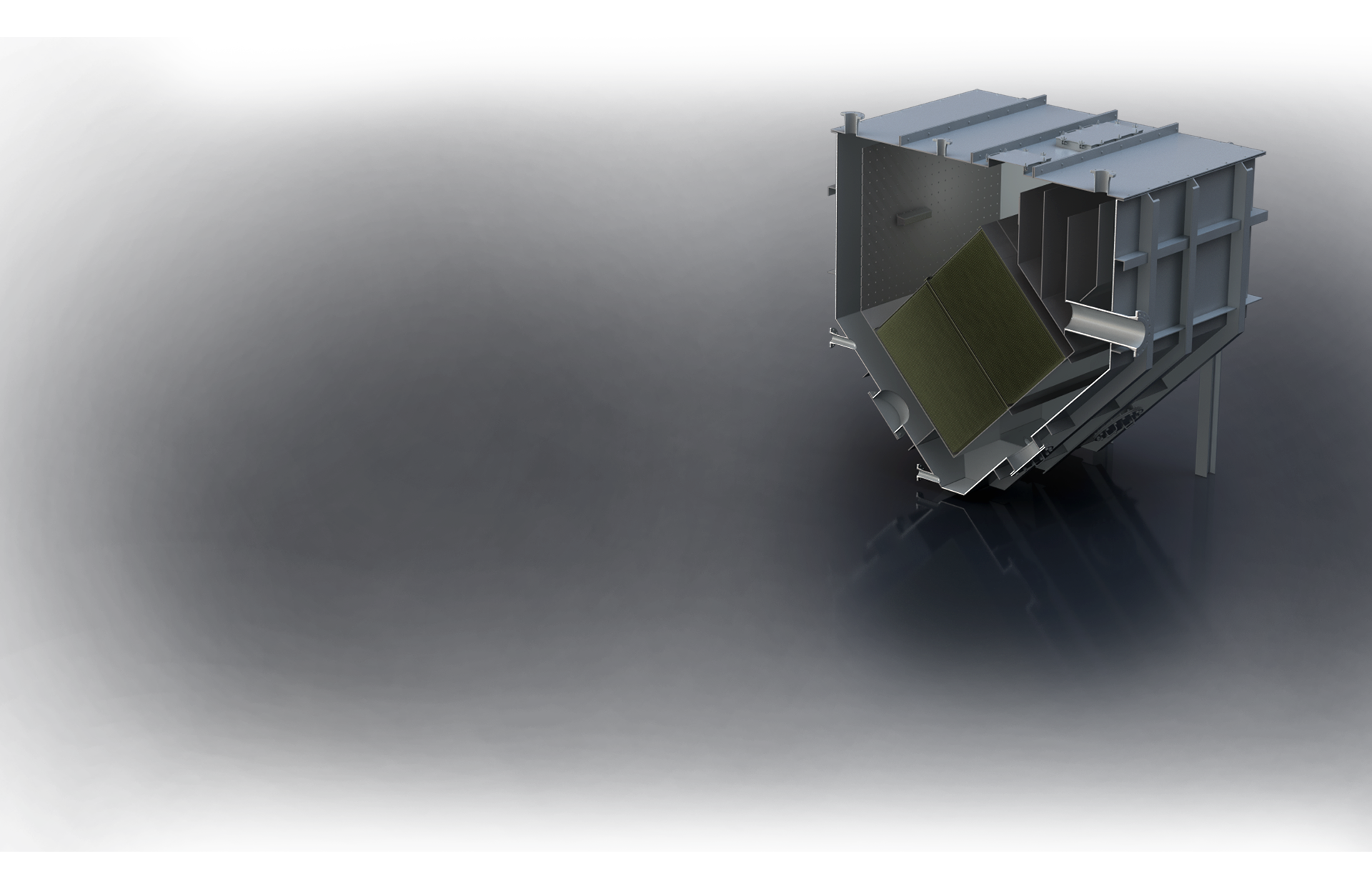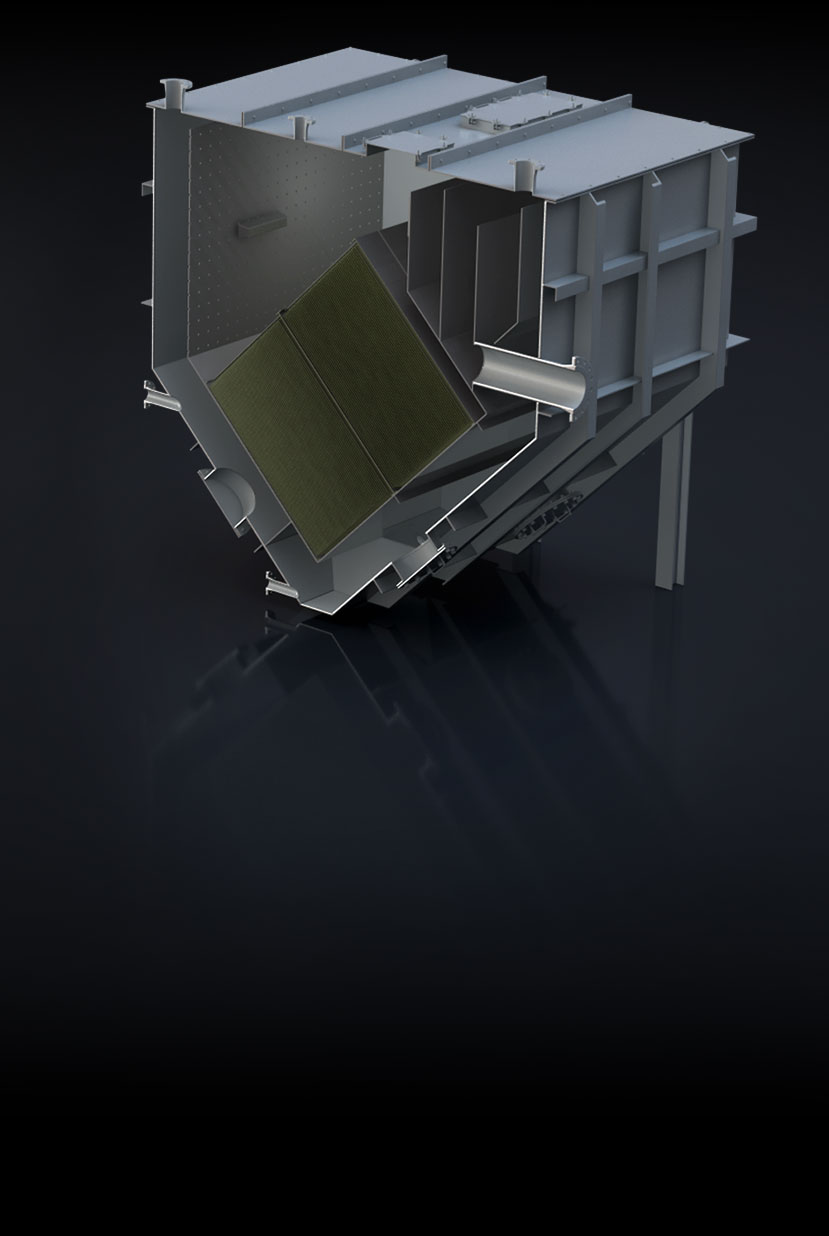Downflow CPI
Our eco-friendly CPI recovers oil from water at the lowest cost while using minimal deck space and the least amount of energy.
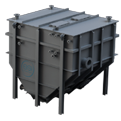
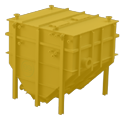
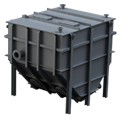
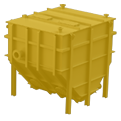
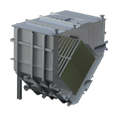
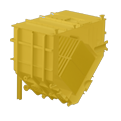
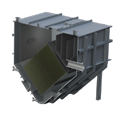
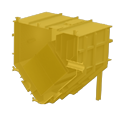
CPI FEATURES
No Power Requirement
No Moving Parts
Compact Design/Minimum Footprint Required
Low Initial Cost
Low Operating Cost
Low Maintenance Cost
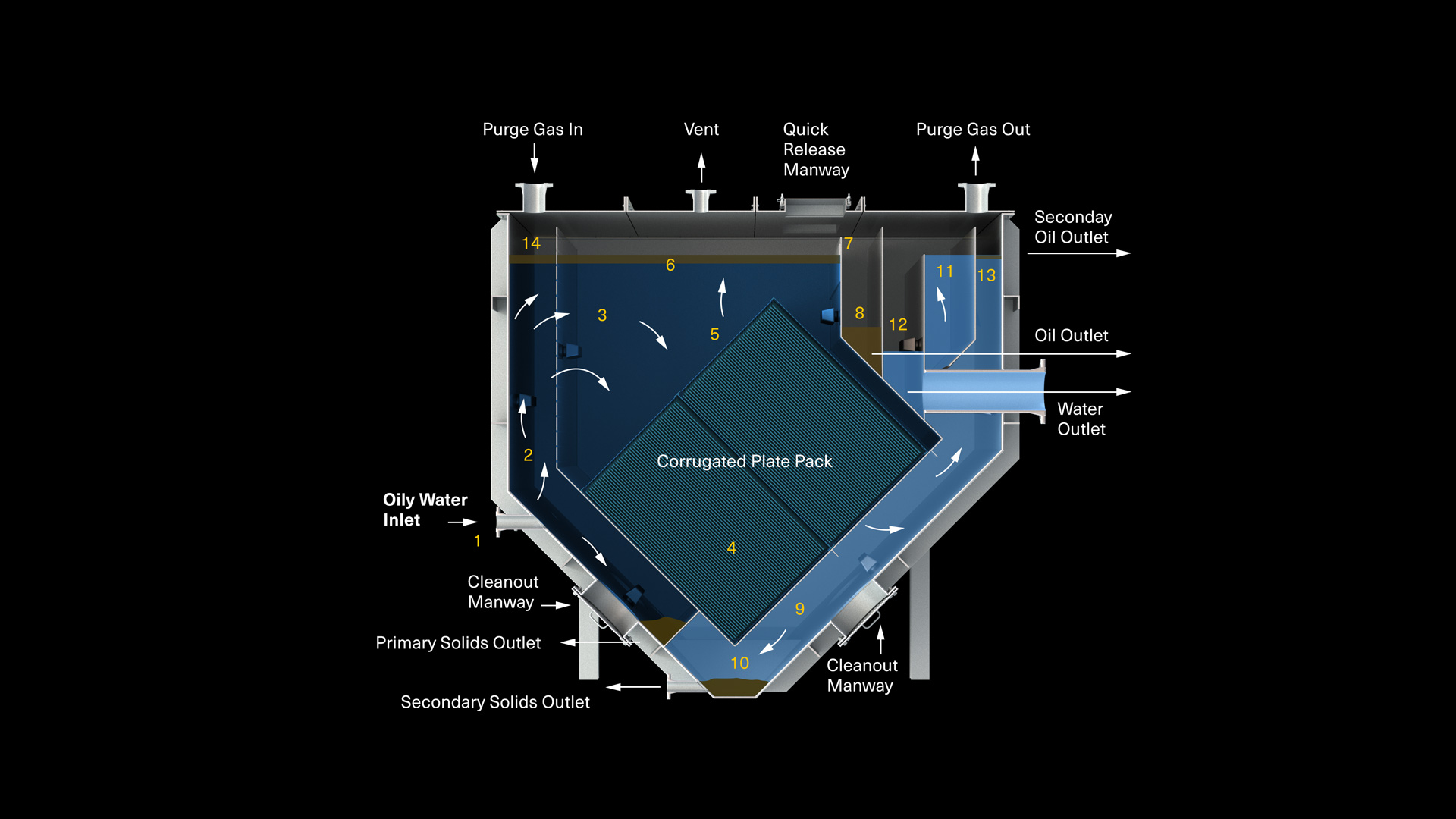
operating principles
Oily-water enters the inlet nozzle (1) Solids break out and settle in the primary solids compartment (2) Oily-water flows upward and through the distribution baffle (3) Evenly dispersed water flows downward and enters the plate pack (4). Oil rises to the peaks of the corrugations and coalesces with other oil droplets (5).
Gaining buoyancy, the oil moves upward along the plates, exiting the pack and up to the oil/water interface. A thick layer of oil is allowed to collect (6) until it flows over and adjustable v-notch weir (7) and into the oil compartment (8). Light solids and sludge separation is accomplished within the pack falling to the valleys of the corrugations (9). The solids then exit the pack into the secondary solids compartment (10). As the water exits the plate pack, it flows upward (11) and over a fixed water weir into a clean water compartment (12).
A secondary oil outlet is adjacent to the water outlet (13). A gasketed lid seals the vessel for a gas blanket (14).
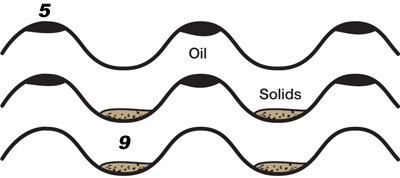
Corrugated Plate Interceptors (CPI): DESIGN PRINCIPLES
The ESI CPI is designed and engineered for oil recovery applications where energy usage and equipment costs are a determining factor. The CPI is a gravity separator where efficiency is determined by the rising velocity of the smallest particles that will be intercepted, usually greater than 50 microns. The plate pack is made of many closely spaced corrugated plates. Using Stoke’s Law, the rate of rise of the oil can be calculated. The greatest advantage of the ESI CPI is that the rising distance is usually less than one inch. This allows the oil droplets to rise and coalesce to larger droplets or sand to fall out of the flowing stream.
The ESI CPI is designed and engineered for oil recovery applications where energy usage and equipment costs are a determining factor.
Gallery
